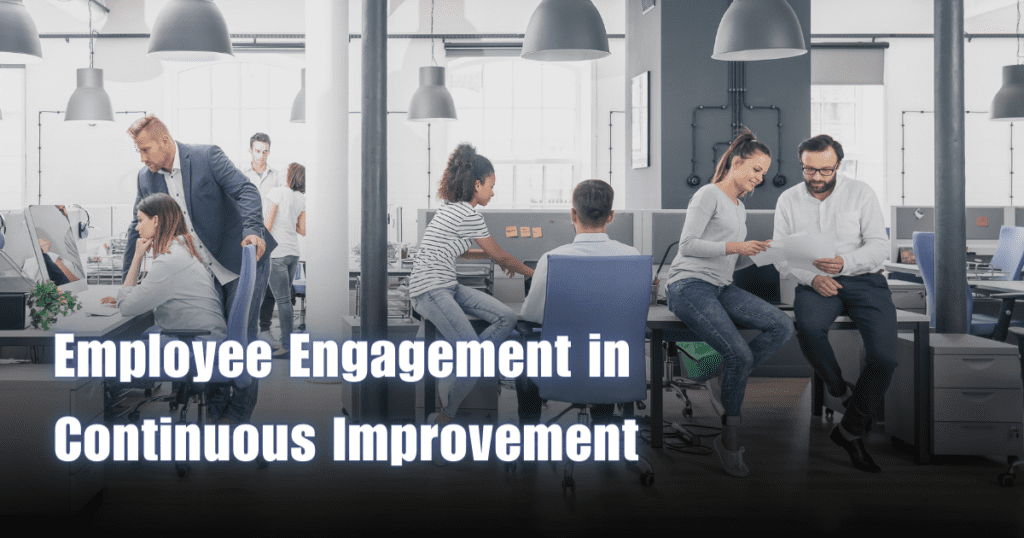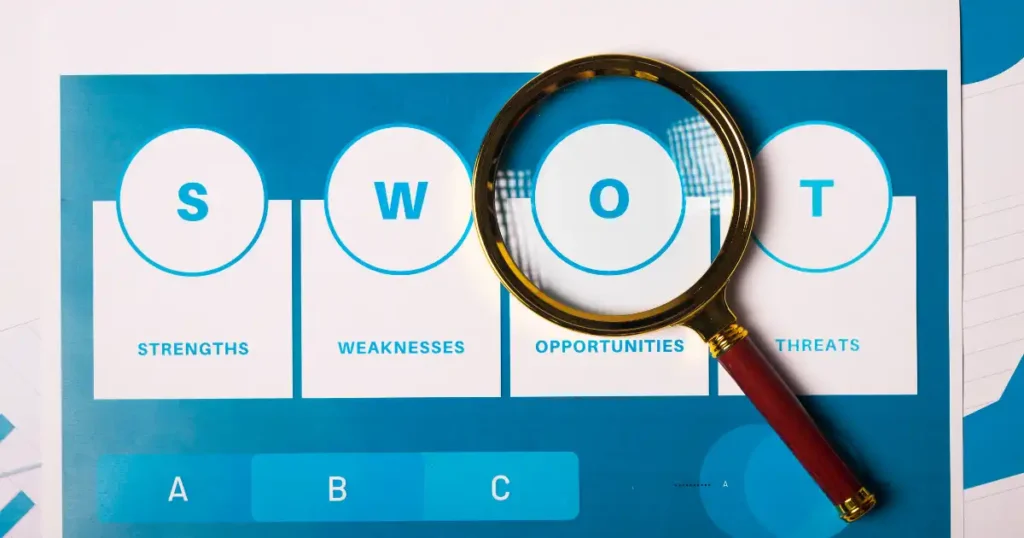Table of Contents
Continuous improvement is a cornerstone of any thriving organization. In today’s fast-paced business world, the ability to adapt and enhance processes not only propels companies ahead of their competitors but also secures their longevity. At the heart of this relentless pursuit for excellence is employee engagement. Without the active involvement and commitment of the workforce, even the most well-intentioned improvement strategies are bound to falter. This article aims to delve into the intricate relationship between continuous improvement and employee engagement, providing you with actionable insights and proven strategies to elevate both within your organization.
Understanding continuous improvement begins with recognizing its fundamental principles. It’s about making incremental changes that cumulatively lead to significant enhancements in efficiency, quality, and performance. These changes are not arbitrary; they are data-driven and systematically implemented to bring measurable benefits. Now, imagine leveraging the collective expertise and enthusiasm of your employees to drive these improvements. Engaged employees are not just passive participants; they are innovators, problem solvers, and champions of change.
In the following sections, we’ll explore the importance of employee engagement, outline strategies to foster it within the context of continuous improvement, and present real-world examples of success. We’ll also address common challenges and provide solutions to ensure your continuous improvement initiatives are effective and sustainable. So, let’s get started on this journey of transforming your workplace into a hub of continuous growth and collective achievement. After all, as a seasoned Six Sigma Black Belt and a professional committed to business improvement, I’ve witnessed firsthand how pivotal engaged employees are in achieving outstanding results. Now, let’s unlock the potential of your team together.
1. Understanding Continuous Improvement
Definition and key principles of continuous improvement
At its core, continuous improvement is about making small, incremental changes to processes, products, or services to enhance efficiency, quality, and performance. The Japanese term “Kaizen,” which means “change for better,” is often used synonymously with continuous improvement. This methodology is rooted in the belief that ongoing, minor improvements can lead to significant long-term gains. It’s not about making drastic changes overnight but focusing on consistent, sustainable progress.
The key principles of continuous improvement include:
- Customer Focus: Ensuring that all improvements add value to the customer.
- Incremental Changes: Implementing small, manageable changes rather than drastic transformations.
- Employee Involvement: Engaging team members at all levels to identify and execute improvement opportunities.
- Data-Driven Decisions: Leveraging data and analytics to guide and validate improvements.
- Standardization: Creating standardized processes to ensure consistency and reliability across the organization.
Benefits of continuous improvement for organizations
Organizations that embed continuous improvement into their culture can reap a multitude of benefits, including:
- Increased productivity and efficiency: By consistently refining processes, organizations can eliminate unnecessary steps, reduce bottlenecks, and enhance overall workflow. This not only boosts productivity but also minimizes wasted resources.
- Enhanced customer satisfaction: Continuous improvement ensures that the focus remains on delivering value to the customer. By continually improving product quality and service delivery, organizations can meet and exceed customer expectations, fostering loyalty and satisfaction.
- Reduced costs and waste: One of the fundamental goals of continuous improvement is to identify and eliminate inefficiencies. This can lead to substantial cost savings as waste is minimized and resources are utilized more effectively.
The symbiotic relationship between continuous improvement and employee engagement
Continuous improvement and employee engagement are two sides of the same coin. When employees are actively engaged, they are more likely to contribute ideas and participate in improvement initiatives. This not only drives continuous improvement but also creates a sense of ownership and accountability among employees.
On the flip side, a robust continuous improvement culture can significantly boost employee engagement. When employees see their ideas being implemented and witness firsthand the positive impact of their contributions, their morale and job satisfaction improve. This can lead to a virtuous cycle where continuous improvement fosters engagement, and engaged employees drive further improvements.
In short, continuous improvement thrives on the active participation of engaged employees, creating a dynamic and forward-thinking workplace where everyone is committed to excellence.
Continuous Improvement Certification Course
2. Importance of Employee Engagement

Definition of employee engagement and its key components
Employee engagement refers to the emotional commitment that employees feel toward their organization and its goals. Engaged employees are those who are fully absorbed and enthusiastic about their work, taking positive actions to further the organization’s reputation and interests. It’s more than just job satisfaction; it’s about feeling valued, connected, and driven to contribute to the organization’s success.
Key components of employee engagement include:
- Emotional Commitment: Employees feel a genuine bond with their organization and its values.
- Job Satisfaction: Employees are content with their roles, responsibilities, and work environment.
- Motivation: Employees are driven to perform at their best and see their efforts contributing to broader organizational goals.
- Autonomy and Ownership: Employees have a sense of control over their work and feel their input is valued and considered.
- Opportunities for Growth: Employees have access to opportunities that allow them to develop and progress within the organization.
Benefits of high employee engagement
Organizations with high employee engagement levels can experience numerous positive outcomes, such as:
- Improved morale and job satisfaction: Engaged employees are generally more satisfied with their jobs. They feel valued, appreciated, and part of a larger mission. This boosts morale, creating a more positive and productive work environment.
- Higher productivity and innovation: Engaged employees are more likely to go above and beyond in their roles. Their enthusiasm translates into higher productivity and a propensity for innovation, as they actively seek out ways to improve processes and products.
- Lower turnover and absenteeism: High engagement levels correlate strongly with employee retention. When employees feel engaged and satisfied, they are less likely to leave the organization for other opportunities. This also leads to reduced absenteeism, as engaged employees are more inclined to be present and contribute actively to their workplace.
How engaged employees contribute to continuous improvement efforts
Engaged employees are indispensable to the success of continuous improvement initiatives. Here’s how they contribute:
- Proactive Problem Solving: Engaged employees are more likely to identify issues and suggest viable solutions. They take ownership of processes and are motivated to find ways to make them better, driving continuous improvement.
- Collaboration and Teamwork: Engaged employees typically work well with others, fostering a collaborative environment that’s ideal for continuous improvement activities. They are willing to share knowledge, support one another, and collectively strive for excellence.
- Commitment to Quality: Being emotionally invested in their work, engaged employees are committed to maintaining high standards of quality. They monitor their performance and make adjustments to ensure they are contributing to the organization’s improvement goals.
- Feedback and Innovation: Engaged employees are not afraid to provide feedback and voice their ideas. They actively participate in brainstorming sessions, surveys, and suggestion programs, providing valuable insights that can lead to innovative improvements.
In essence, when employees are engaged, they are more likely to drive continuous improvement forward. They embody the principles of continuous improvement by being proactive, collaborative, and dedicated to quality in their daily work. By investing in employee engagement, organizations can cultivate a workforce that’s not just doing their jobs but is actively contributing to the organization’s growth and success.
Related: The Role of Leadership in Fostering a Culture of Improvement
3. Strategies for Engaging Employees in Continuous Improvement

3.1 Explain the Benefits
Communicating the advantages of continuous improvement to employees
The first step in engaging employees in continuous improvement is to clearly communicate the benefits. When employees understand how these initiatives will positively impact them and the organization, they are more likely to buy-in and participate enthusiastically.
Using examples and data to demonstrate the positive impact on quality, productivity, and career growth
To effectively communicate the advantages, leverage real-world examples and data:
- Quality Improvements: Share specific instances where continuous improvement efforts have led to higher quality products or services. For example, you could highlight a project where adjustments in the manufacturing process reduced defects by 30%, leading to higher customer satisfaction and fewer returns.
- Productivity Enhancements: Use data to show how continuous improvement has streamlined processes and increased productivity. Illustrate this with a case where a department implemented a new software tool that cut administrative time in half, allowing employees to focus on more value-added tasks.
- Career Growth: Emphasize the career benefits of being involved in continuous improvement. Cite examples of employees who took the lead on improvement projects, gained new skills, and were subsequently promoted or recognized for their contributions. Positioning continuous improvement as a pathway to personal and professional development can be a significant motivator.
By providing tangible evidence of the positive impact, you can make a compelling case for continuous improvement that resonates with employees.
Building trust and highlighting the role of employees as experts in their processes
To engage employees effectively, it’s crucial to build trust and acknowledge their expertise. Here’s how to do it:
- Transparency: Share information openly about the goals and expected outcomes of continuous improvement projects. Employees should feel they are in the loop and understand the bigger picture.
- Recognition of Expertise: Make it clear that employees are the experts in their own processes. Acknowledge that their insights and firsthand experiences are invaluable to identifying areas for improvement. This can be communicated through meetings, newsletters, or even direct conversations where managers express appreciation for the team’s deep operational knowledge.
- Active Listening: Create forums for employees to voice their ideas and concerns—whether through suggestion boxes, regular meetings, or digital platforms. Actively listening and responding to these inputs reinforces that you value their contributions.
- Participative Decision Making: Involve employees in decision-making processes related to improvement initiatives. When they see that their suggestions are taken seriously and implemented, it builds a stronger sense of ownership and commitment to the project’s success.
By clearly articulating the benefits, using real data and examples, and fostering an environment of trust and recognition, you empower employees to actively engage in continuous improvement. They will not only see the value of these activities but also feel valued themselves, leading to a more committed and proactive workforce.
3.2 Involve Employees in the Process
Methods to solicit and incorporate employee ideas (e.g., surveys, suggestion boxes, brainstorming sessions)
One of the most effective ways to engage employees in continuous improvement is to actively solicit their ideas. There are several methods you can use to gather input:
- Surveys: Deploy regular surveys to collect feedback and suggestions from employees on process improvements. Ensure the surveys are straightforward and allow for anonymous submissions to encourage honest and uninhibited responses.
- Suggestion Boxes: Set up physical or digital suggestion boxes where employees can drop their ideas at any time. The key is to review these suggestions regularly and act on feasible ones.
- Brainstorming Sessions: Organize brainstorming sessions where teams can come together to discuss and propose improvement ideas. These sessions should be facilitated to ensure everyone has an opportunity to contribute.
- Workshops: Conduct workshops focused on specific improvement areas. These can be interactive and provide a structured format for employees to critique current processes and suggest enhancements.
Empowering employees to make decisions and take ownership of improvements
Empowering employees is crucial for sustaining engagement. This involves giving them the authority and resources to make decisions and implement changes. Here’s how to go about it:
- Delegation of Authority: Allow employees, especially those closest to the processes, to make decisions regarding minor changes. This approach reduces bottlenecks and fosters a sense of ownership.
- Project Leadership Opportunities: Provide opportunities for employees to lead improvement projects. This could involve forming teams with designated leaders who are responsible for executing specific initiatives.
- Resource Allocation: Ensure employees have access to the necessary resources—be it time, tools, or training—to carry out their improvement ideas effectively. This might also include budget allocations for projects that show promise.
- Supportive Environment: Create an environment where employees feel safe to experiment and learn from failures. Encourage them to take calculated risks without fear of undue repercussions, promoting an innovative and proactive culture.
Fostering a culture of co-authorship and collaboration in problem-solving
A culture of co-authorship and collaboration enhances continuous improvement efforts by leveraging collective intelligence and fostering unity:
- Cross-Functional Teams: Form cross-functional teams to address improvement opportunities. These teams bring together diverse perspectives and expertise, leading to more holistic and effective solutions.
- Communities of Practice: Establish communities of practice where employees with similar interests or expertise can share knowledge, discuss challenges, and co-develop solutions. These communities can be facilitated through regular meetings or online platforms.
- Collaborative Platforms: Use collaborative tools and platforms (e.g., project management software, shared documents) that enable employees to work together seamlessly, even if they are in different locations.
- Recognition of Collaborative Efforts: Recognize and celebrate team efforts and collaborative achievements. Highlighting successful collaborative projects in meetings, newsletters, and award ceremonies reinforces the value of teamwork.
By involving employees in the process, empowering them to make decisions, and fostering a collaborative culture, you create an engaged and motivated workforce ready to drive continuous improvement. Employees will feel a greater sense of ownership and commitment, knowing that their contributions have a tangible impact on the organization’s success.
3.3 Provide Training and Support
Offering training on continuous improvement methodologies (e.g., Lean, Six Sigma)
Effective continuous improvement requires a solid understanding of the methodologies and tools used to drive change. Offering comprehensive training programs is essential for equipping your employees with the knowledge and skills they need:
- Lean and Six Sigma Training: Provide training in Lean and Six Sigma methodologies, tailored to different levels of expertise—from introductory courses for beginners to advanced training for those leading improvement projects. This training can include formal certifications like Yellow Belt, Green Belt, and Black Belt in Six Sigma, ensuring that employees are proficient in problem-solving techniques and process optimization.
- Workshops and Seminars: Host workshops and seminars to delve into specific continuous improvement tools and techniques, such as root cause analysis, process mapping, and value stream mapping. These interactive sessions allow employees to practice and apply what they have learned in a supportive environment.
- E-Learning Modules: Develop or utilize existing e-learning modules that employees can access at their convenience. This ensures flexibility and allows them to learn at their own pace.
We provide online training with tools, templates, certification, practical demonstrations and more! Check out some of our great courses!
Lean Six Sigma White Belt Certification Course
Lean Six Sigma Yellow Belt Certification Course
Providing coaching, mentoring, and feedback to support employee development
Beyond formal training, ongoing support is crucial for continuous improvement to take root. Here’s how you can provide that support:
- Coaching: Assign experienced coaches to guide employees through the application of continuous improvement methodologies. Coaches can provide one-on-one support, helping employees to navigate challenges and apply their learnings effectively.
- Mentoring Programs: Establish mentoring programs where seasoned professionals can share their knowledge and experiences with less experienced employees. This can provide valuable insights and foster a culture of learning and collaboration.
- Regular Feedback: Implement a system for regular feedback on improvement initiatives. Constructive feedback is essential for growth and can help employees refine their approaches, learn from mistakes, and celebrate successes.
- Peer Learning Groups: Create peer learning groups where employees can discuss their continuous improvement projects, share experiences, and learn from each other. These groups can be facilitated through regular meetings or online forums.
Aligning training programs with the needs of the digital age (e.g., data analytics, AI)
In today’s digital age, continuous improvement efforts must be aligned with new technologies and modern tools:
- Data Analytics Training: Offer training in data analytics to help employees leverage data for making informed decisions. This can include courses on data visualization, statistical analysis, and the use of specific data analytics tools and software.
- AI and Machine Learning: Introduce employees to the basics of artificial intelligence (AI) and machine learning, demonstrating how these technologies can be used to identify patterns, predict outcomes, and drive process improvements.
- Digital Tools and Platforms: Train employees on the use of digital tools and platforms that facilitate continuous improvement. This can include project management software, collaboration tools, and other technologies that streamline workflow and enhance communication.
- Continuous Learning Culture: Foster a culture of continuous learning by encouraging employees to stay updated with the latest trends and advancements in technology. Provide access to online courses, webinars, and industry conferences to help them keep their skills current.
By offering robust training programs, providing ongoing coaching and mentoring, and aligning training with the needs of the digital age, you ensure that your employees are well-equipped to contribute to continuous improvement initiatives. This not only enhances their skills and career growth but also drives your organization’s overall performance and success.
3.4 Recognize and Reward Contributions
Implementing a recognition program to celebrate employee contributions
Recognizing and rewarding employee contributions is vital for sustaining engagement and motivation in continuous improvement efforts. A well-designed recognition program can make employees feel valued and appreciated, leading to increased dedication and productivity.
- Structured Recognition Program: Develop a structured program that clearly defines the criteria for recognition and the types of contributions that will be acknowledged. This could include milestones achieved in improvement projects, innovative ideas implemented, or consistent participation in improvement initiatives.
- Regular Celebration of Achievements: Schedule regular intervals—monthly, quarterly, or annually—to celebrate achievements and contributions. This ensures that recognition is timely and relevant, making employees feel their efforts are genuinely appreciated.
Using various forms of recognition (e.g., verbal praise, certificates, bonuses)
Acknowledgement doesn’t solely rely on financial incentives. Here are some effective ways to acknowledge and celebrate employee contributions:
- Verbal Praise: Sometimes, a simple thank you can go a long way. Managers and leaders should make it a habit to verbally acknowledge employees’ efforts in team meetings or one-on-one interactions.
- Certificates and Awards: These can be a tangible acknowledgement of an employee’s contributions. Certificates of achievement, plaques, or awards can be presented during recognition events or company-wide meetings.
- Bonuses and Financial Incentives: Financial rewards can be a powerful motivator. Implement performance bonuses, profit-sharing schemes, or gift cards as part of your recognition program to provide a tangible benefit for employees’ hard work.
- Public Recognition: Highlight achievements in company newsletters, on bulletin boards, or in internal communication channels. Public recognition can boost an employee’s sense of pride and accomplishment.
- Career Advancement Opportunities: Offer opportunities for career growth, such as promotions, leadership roles in new projects, or professional development courses. This form of recognition not only rewards employees but also invests in their future.
Related: 20 Meaningful Employee Recognition Ideas
Aligning recognition with organizational values and continuous improvement goals
For a recognition program to be effective, it must align with your organization’s core values and continuous improvement goals. Here’s how to ensure alignment:
- Clear Communication of Values: Ensure employees understand the organizational values that underpin the recognition program. For instance, if innovation and collaboration are core values, these should be emphasized in the criteria for recognition.
- Goal-Oriented Recognition: Tie recognition directly to continuous improvement goals. For example, if the goal is to reduce waste, recognize employees and teams that contribute significantly to this objective through successful projects.
- Consistency and Fairness: Ensure that the recognition program is applied consistently and fairly across the organization. All employees should have equal opportunities to be recognized, and the criteria should be transparent and understood by all.
- Feedback Mechanism: Incorporate a feedback mechanism where employees can provide input on the recognition program. This helps ensure the program remains relevant and effective, and it shows that you value their opinions in shaping the program.
By implementing a comprehensive recognition program that celebrates employee contributions through various forms of acknowledgement and ensuring alignment with organizational values and goals, you create a culture where employees feel valued and motivated. Recognition not only boosts morale but also reinforces the importance of continuous improvement, encouraging employees to actively engage in efforts that drive organizational success.
3.5 Encourage Collaboration and Communication
Creating cross-functional teams and communities of practice
One of the most effective ways to foster collaboration in continuous improvement is by creating structures that bring diverse perspectives together:
- Cross-Functional Teams: Form teams composed of members from different departments or functions. These teams can address specific improvement projects, bringing together varied expertise and perspectives. This not only enhances problem-solving but also fosters a culture of collaboration and mutual respect.
- Communities of Practice: Establish communities of practice where employees with shared interests in particular aspects of continuous improvement can come together. These communities can be focused on topics such as Lean methodologies, quality control, or data analytics. Regular meetings and discussions within these groups can lead to the sharing of best practices and innovative ideas.
Facilitating open communication channels and regular meetings
Effective communication is the backbone of successful continuous improvement initiatives. Here’s how to facilitate it:
- Open Communication Channels: Create and maintain open communication channels where employees can freely share their ideas, feedback, and concerns. This could include dedicated email addresses, internal chat platforms, or collaborative project management tools.
- Regular Meetings: Hold regular meetings at various levels—team meetings, departmental meetings, and all-hands meetings. These meetings should provide a platform for discussing progress on improvement projects, sharing success stories, and identifying new opportunities for improvement.
- Idea Sharing Platforms: Implement digital platforms where employees can post their continuous improvement ideas and collaborate on them. Tools like intranet forums, suggestion boards, or innovation management software can be very effective.
- Feedback Loops: Establish feedback loops where employees can receive timely and constructive feedback on their ideas and contributions. This promotes a culture of continuous dialogue and improvement.
Training employees in effective communication and teamwork
To ensure collaboration and communication are effective, it’s essential to equip employees with the necessary skills:
- Communication Skills Training: Offer training that focuses on improving verbal and written communication skills. Effective communication is vital for clear transmission of ideas, feedback, and instructions.
- Teamwork Workshops: Conduct workshops that emphasize the importance of teamwork and collaboration. These workshops can include team-building exercises, role-playing scenarios, and other interactive activities designed to enhance cooperation.
- Conflict Resolution Training: Provide training on conflict resolution techniques. In a collaborative environment, conflicts can arise, and it’s critical that employees know how to manage and resolve these issues constructively.
- Leadership Development: Invest in leadership development programs that train employees to be effective team leaders. Good leaders facilitate collaboration by guiding teams, mediating conflicts, and ensuring everyone’s ideas are heard and valued.
- Empathy and Active Listening: Train employees in empathy and active listening skills. Being able to understand and consider different perspectives is crucial for effective teamwork and communication.
By creating cross-functional teams, facilitating open communication channels, and providing targeted training in communication and teamwork, you can significantly enhance collaboration within your organization. These strategies not only support continuous improvement initiatives but also build a cohesive and motivated workforce that thrives on shared goals and collective success.
3.6 Review and Improve the Process
Continuously evaluating the effectiveness of the continuous improvement process
The cornerstone of any successful continuous improvement initiative is the ongoing evaluation of its effectiveness. This ensures that the approaches and strategies you have in place remain aligned with your organizational goals and adapt to any emerging needs or challenges.
- Regular Assessments: Schedule regular assessments to evaluate the progress of your continuous improvement projects. This could be done quarterly or biannually, depending on the scope and scale of the projects.
- Performance Metrics: Establish clear performance metrics to gauge the effectiveness of the improvement initiatives. These metrics could include key performance indicators (KPIs) such as time savings, cost reductions, quality improvements, and employee engagement levels.
- Benchmarking: Compare your organization’s performance against industry standards or best practices. Benchmarking helps identify areas where you can improve and adopt more effective strategies.
Soliciting feedback from employees, customers, and stakeholders
To ensure that your continuous improvement process is on the right track, it’s crucial to gather feedback from all relevant parties. This includes employees, customers, and other key stakeholders:
- Employee Feedback: Encourage employees to provide feedback on the continuous improvement initiatives. This can be done through surveys, suggestion boxes, focus groups, or during regular meetings. Employees’ insights are invaluable as they are directly involved in the processes being improved.
- Customer Feedback: Customers can offer a unique perspective on the effectiveness of your improvement efforts. Use customer satisfaction surveys, feedback forms, and direct interviews to gather their opinions. Understanding their experiences and expectations can guide your improvement projects to better meet customer needs.
- Stakeholder Engagement: Involve other stakeholders—such as suppliers, partners, and investors—in your feedback loop. Their input can provide a holistic view of your continuous improvement efforts and highlight areas for collaboration and enhancement.
Making necessary adjustments to ensure the process remains relevant and effective
Continuous improvement is an iterative process that requires regular fine-tuning and adaptation:
- Analyze Feedback: Carefully analyze the feedback you receive from employees, customers, and stakeholders. Look for common themes, areas of concern, and suggestions for improvement.
- Responsive Adjustments: Make necessary adjustments based on the feedback and assessment outcomes. This might include changing certain methodologies, reallocating resources, or altering project scopes to better align with the feedback and organizational goals.
- Pilot Testing: Before fully implementing any adjustments, conduct pilot tests to gauge their effectiveness. Piloting allows you to test improvements on a smaller scale and make any additional tweaks before a full rollout.
- Document and Communicate Changes: Document any changes made and communicate them clearly to all relevant parties. Ensure that employees understand how these changes will impact their roles and the overall continuous improvement process.
- Ongoing Monitoring: Implement an ongoing monitoring system to regularly check the performance of the adjusted processes. Continuous monitoring helps detect any issues early and allows for timely interventions.
- Celebrate Successes: Recognize and celebrate the successes brought about by continuous improvement. Highlighting these achievements not only boosts morale but also demonstrates the tangible benefits of the improvement process, encouraging further engagement and participation.
By continuously evaluating the effectiveness of your continuous improvement process, actively soliciting feedback, and making responsive adjustments, you can ensure that your improvement initiatives remain relevant, effective, and aligned with your organizational goals. This ongoing cycle of assessment and adaptation is what drives sustained success and growth in any organization.
4. Case Studies and Examples

Real-world examples of successful employee engagement in continuous improvement
To truly understand the impact of employee engagement in continuous improvement, let’s look at some real-world examples where organizations have successfully implemented these practices and achieved remarkable results.
Case Study 1: Toyota’s Lean Manufacturing
Background: Toyota is renowned for its pioneering use of Lean manufacturing principles, which focus on continuous improvement and waste reduction. A core aspect of Toyota’s approach is the active involvement of employees at all levels.
Employee Engagement:
- Suggestion System: Toyota implemented a robust suggestion system where employees are encouraged to submit improvement ideas. Over a given year, Toyota employees submit thousands of suggestions, with a high percentage being implemented.
- Gemba Walks: Managers regularly perform Gemba walks, where they go to the actual place (Gemba) where work is done, to observe and discuss with employees any potential improvements in the process.
Results:
- Increased Efficiency: Continuous small improvements have led to significant efficiency gains. For example, assembly line adjustments resulting from employee suggestions have reduced production time significantly.
- Enhanced Employee Morale: Employees feel valued and empowered, enhancing job satisfaction and reducing turnover rates.
Lessons Learned:
- Empower Employees: Employees on the front lines often have the best insights into process inefficiencies. Empowering them to voice their ideas leads to practical and impactful improvements.
- Continuous Feedback Loop: An ongoing system for suggestions ensures sustained engagement and continuous improvement.
Case Study 2: Starbucks’ Employee Collaboration
Background: Starbucks has long prioritized innovation and customer experience, and much of its success can be attributed to engaging employees in continuous improvement efforts.
Employee Engagement:
- “My Starbucks Idea” Portal: Starbucks launched an online platform where employees and customers could submit ideas for new products, services, and process improvements. This platform became a key tool for involving employees in the company’s innovation process.
- Collaborative Forums: Regular collaborative forums bring together employees from different stores to discuss challenges and brainstorm solutions, fostering a sense of community and shared purpose.
Results:
- Product Innovation: Many new product ideas, such as the popular Frappuccino variations, originated from employee suggestions collected via the idea portal.
- Operational Improvements: Operational efficiencies in store layout and customer service processes have been continually refined based on employee feedback, leading to smoother operations and better customer experiences.
Lessons Learned:
- Accessible Idea Sharing: Providing accessible and straightforward channels for idea sharing encourages wide participation and leads to diverse, innovative solutions.
- Community Building: Regular forums and open discussion spaces create a strong sense of community, enhancing overall employee engagement and collaboration.
Best practices from these case studies
- Create Easy-to-Use Platforms for Idea Submission: Implement simple and accessible channels for employees to submit their ideas. This ensures a steady flow of innovative suggestions and helps employees feel their contributions are valued.
- Encourage Managerial Involvement: Involve managers in direct engagement with employees, such as through Gemba walks or collaborative forums. Managerial support and interest in employee ideas can significantly enhance engagement levels.
- Regularly Celebrate and Recognize Contributions: Regularly acknowledge and celebrate employee contributions. This can range from formal recognition programs to casual shout-outs during team meetings, as seen in Toyota’s and Starbucks’ approaches.
- Implement and Provide Feedback on Suggestions: When employees see their ideas being implemented or get constructive feedback, it reinforces the importance of their contributions and encourages further participation.
- Foster a Culture of Continuous Improvement: Embed continuous improvement into the organizational culture. This involves ongoing training, open communication, and a sustained commitment from leadership to support and prioritize employee-driven initiatives.
By learning from these real-world examples and best practices, organizations can effectively engage their employees in continuous improvement, driving productivity, innovation, and overall organizational success.
5. Challenges and Solutions

Common obstacles to engaging employees in continuous improvement
While engaging employees in continuous improvement can yield significant benefits, it’s not without its challenges. Here are some common obstacles organizations may face:
- Resistance to Change: Employees may resist continuous improvement initiatives due to fear of change, comfort with the status quo, or a lack of understanding of the benefits.
- Lack of Time: Employees may feel they are too busy with their daily responsibilities to participate in improvement activities.
- Insufficient Training: Without proper training, employees may lack the necessary skills and knowledge to effectively contribute to continuous improvement.
- Inadequate Communication: Poor communication can lead to misunderstandings, unmet expectations, and a lack of alignment with improvement goals.
- Lack of Recognition: If employees’ contributions are not recognized, they may feel undervalued and less motivated to engage in improvement efforts.
Practical solutions and strategies to overcome these challenges
To address and overcome these obstacles, consider implementing the following practical solutions and strategies:
- Change Management Strategies:
- Education and Communication: Provide clear information about the need for change and the benefits of continuous improvement. Use data and real-world examples to illustrate the positive impact.
- Involve Employees Early: Involve employees in the planning stages of improvement initiatives. This inclusion can reduce resistance by making them feel part of the process.
- Time Management Solutions:
- Prioritize Improvement Initiatives: Help employees manage their time by prioritizing key improvement initiatives and integrating them into their regular work schedules.
- Allocate Dedicated Time: Set aside dedicated time for improvement activities. This could be an hour each week where employees focus solely on continuous improvement tasks.
- Enhanced Training Programs:
- Customized Training: Develop training programs tailored to different roles and levels within the organization. Make sure these programs cover the key principles and tools of continuous improvement.
- Ongoing Development: Offer continuous learning opportunities and refresher courses to keep skills current and aligned with the latest methodologies.
- Improved Communication Channels:
- Transparent Communication: Establish clear and transparent communication channels. Regularly update employees on the progress and outcomes of improvement initiatives.
- Open Forums and Feedback Mechanisms: Create forums and feedback mechanisms where employees can voice their opinions, ask questions, and provide suggestions.
- Comprehensive Recognition Programs:
- Formal Recognition: Implement formal recognition programs that celebrate employee contributions to continuous improvement, such as award ceremonies, certificates, and financial incentives.
- Informal Appreciation: Foster a culture of appreciation where managers and peers regularly acknowledge each other’s efforts through informal recognition, such as verbal praise and thank-you notes.
- Creating a Supportive Environment:
- Encourage Experimentation: Allow employees to experiment with new ideas without fear of failure. A supportive environment encourages creativity and innovation.
- Provide Resources and Tools: Ensure that employees have access to the necessary resources, tools, and technologies to effectively contribute to improvement efforts.
- Leadership Involvement:
- Active Leadership Engagement: Leaders should actively participate in continuous improvement initiatives. Their involvement demonstrates the importance of these efforts and sets a positive example.
- Mentorship and Guidance: Leaders can act as mentors, providing guidance and support to employees engaged in improvement projects.
Implementing these strategies can help overcome obstacles, leading to the successful engagement of employees in continuous improvement efforts:
- Overcoming Resistance to Change:
- Showcase Successful Cases: Highlight successful case studies and stories within the organization or industry to show the tangible benefits of continuous improvement.
- Offer Incentives: Provide incentives for participation, such as recognition, professional development opportunities, and financial rewards.
- Managing Time Constraints:
- Streamline Processes: Identify and eliminate non-value-added tasks to free up time for employees to engage in improvement activities.
- Encourage Efficiency: Promote efficient work practices and time management techniques.
- Ensuring Adequate Training:
- Accessible Training Options: Offer various training formats, including in-person workshops, online courses, and on-the-job training. Ensure training is accessible and convenient for all employees.
- Enhancing Communication:
- Regular Updates: Provide regular updates on improvement initiatives through newsletters, emails, and meetings.
- Interactive Communication Tools: Use interactive communication tools, such as intranet forums and chat platforms, to facilitate ongoing discussions and collaboration.
- Fostering Recognition and Appreciation:
- Recognition Platforms: Create platforms where employees can publicly acknowledge each other’s contributions and successes.
- Celebration Events: Host events to celebrate milestones and achievements in continuous improvement projects.
By addressing these challenges head-on and implementing practical solutions, organizations can foster a culture of continuous improvement that actively engages employees and drives lasting success.
6. Conclusion
Recap of the importance of employee engagement in continuous improvement
Employee engagement is the lifeblood of continuous improvement. It’s not just about implementing change; it’s about cultivating a workforce that feels valued, empowered, and motivated to contribute to the organization’s success. Engaged employees bring fresh ideas, drive innovation, and are committed to maintaining high standards of quality and efficiency. They are the ones who truly understand the intricacies of their work processes and can provide invaluable insights into how to improve them.
Final thoughts on fostering a culture of continuous improvement through employee engagement
Fostering a culture of continuous improvement requires more than just setting goals and conducting training sessions. It necessitates creating an environment where employees feel genuinely valued and are encouraged to take initiative. By implementing strategies such as clear communication, thorough training, regular feedback, and meaningful recognition, organizations can engage their employees effectively. It’s this culture of involvement and ownership that will drive sustained improvement and long-term success.
The journey to continuous improvement is ongoing, and it thrives in a culture where employees see their ideas put into action and their contributions recognized. When employees are engaged, they are more likely to go above and beyond, continuously seeking ways to enhance processes, reduce waste, and improve overall performance. This creates a dynamic and resilient organization capable of adapting to changing market conditions and achieving sustained growth.
To all leaders and managers, it’s time to take action. The benefits of engaging employees in continuous improvement are clear and compelling. Start by implementing the strategies discussed in this article:
- Clearly Explain the Benefits: Help your employees understand how continuous improvement will benefit them and the organization.
- Involve Employees in the Process: Solicit their ideas, empower them to make decisions, and foster a culture of collaboration.
- Provide Training and Support: Offer comprehensive training and ongoing support to ensure employees have the skills and confidence needed to contribute.
- Recognize and Reward Contributions: Celebrate achievements and reward employees who drive improvement initiatives.
- Encourage Collaboration and Communication: Create cross-functional teams, facilitate open communication, and provide training in effective teamwork.
- Review and Improve the Process: Continuously evaluate the effectiveness of your continuous improvement efforts, solicit feedback, and make necessary adjustments.
By actively engaging your employees and making continuous improvement a fundamental part of your organizational culture, you will see remarkable benefits in productivity, innovation, and employee satisfaction. Don’t wait—start implementing these strategies today and continuously seek ways to enhance engagement. Your commitment to employee engagement and continuous improvement will pave the way for a thriving and successful future.
Thank you for reading! If you have any questions or need further insights, feel free to reach out. Let’s make continuous improvement a shared journey to success!
FAQs
Here are some frequently asked questions that provide further clarity on engaging employees in continuous improvement:
- What are some effective ways to gather employee feedback for continuous improvement?
- Utilizing surveys, suggestion boxes, regular brainstorming sessions, and open forums are effective ways to gather employee feedback. Digital platforms and collaborative tools can also facilitate the collection and management of feedback.
- How can I motivate my employees to participate in continuous improvement initiatives?
- Clearly communicate the benefits, provide necessary training, involve them in decision-making, recognize their contributions, and foster an open and supportive environment. Incentives and career advancement opportunities can also serve as strong motivators.
- What are the key components of a successful recognition program?
- A successful recognition program should include clear criteria, various forms of recognition (verbal praise, certificates, financial incentives), regular celebration of achievements, and alignment with organizational values and goals.
- How can I ensure that continuous improvement becomes an integral part of the organizational culture?
- Embed continuous improvement principles in everyday practices, provide ongoing training and support, encourage open communication, recognize and celebrate contributions, and involve employees at all levels in continuous improvement initiatives. Leadership commitment is also crucial.
- What role does leadership play in fostering a culture of continuous improvement?
- Leaders play a crucial role in setting the tone for continuous improvement. They need to actively participate, provide guidance, support employee initiatives, facilitate open communication, and recognize and celebrate successes to foster a culture of continuous improvement.







